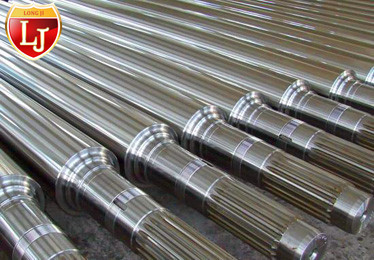

DIN 1.2379 Steel (X153CrMoV12 Material) is a high carbon chromium molybdenum vanadium cold worked tool steel with high wear resistance, good dimensional stability, toughness and hardenability. Due to the secondary hardening properties, it is easy to carry out supplementary nitriding and surface coating. High chromium increases wear resistance and toughness and contributes to corrosion resistance; Vanadium gives steel a finer grain structure and prevents excessive grain growth and improves hardenability of steel; Molybdenum increases heat resistance and hardenability, improve corrosion and wear resistance.
The following content gives the 1.2379 datasheet including chemical composition, mechanical properties, and physical properties.
Datasheet -1, Chemical composition (melt analysis) for alloyed cold work tool steels.
| Chemical Composition % | ||||||||
| Country (Region) | Standard | Steel Grade (Steel Number) | C | Si | Mn | Cr | Mo | V |
| European Union | EN ISO 4957 | X153CrMoV12 (1.2379) | 1.45-1.60 | 0.10-0.60 | 0.20-0.60 | 11.0-13.0 | 0.70-1.00 | 0.70-1.00 |
The datasheet below summarizes 1.2379 properties including physical properties and mechanical properties.
Datasheet -2, X153CrMoV12 Physical Properties
| Density, g/cm3 | 7,7 |
| Specific heat capacity, J/(Kg·K) | 460 at 20 ℃ |
| Electrical resistivity, μΩ·m | 0,65 (20 ℃) |
| Elastic modulus, GPa (kN/mm2) | 210 |
| Thermal conductivity, (W/m·K) | 16,7 (20 ℃) |
| 20,5 (350 ℃) | |
| 24,2 (700 ℃) | |
| Coefficient of thermal expansion, (10-6/K) | 10,5 (20-100 ℃) |
| 11,5 (20-200 ℃) | |
| 11,9 (20-300 ℃) | |
| 13,0 (20-400 ℃) |
Datasheet -3, The table below shows 1.2379 mechanical properties including tensile strength and yield strength.
| Mechanical properties | ||||
| Country (Region) | Standard | Steel Grade (Steel Number) | Tensile strength, MPa, ≥ | Yield strength, MPa, ≥ |
| European Union | EN ISO 4957 | X153CrMoV12 (1.2379) | 860 | 420 |
1 MPa = 1 N/mm2
Soft annealing: 800 °C – 850 °C (1470 °F – 1560 °F), furnace cooling, maximum Brinell hardness 255 HB.
DIN 1.2379 Hardening: austenitizing temperature 1020 ± 10 °C; Quenching agent: air; Tempering temperature: 180 ± 10 °C; Minimum Rockwell Hardness: 61 HRC.
Datasheet -4, hardness tempering temperature
| Hardness tempering temperature | |
| Tempering temperature, °C | Hardness, HRC |
| 100 | 64 |
| 200 | 62 |
| 300 | 60 |
| 400 | 59 |
| 500 | 60 |
| 550 | 58 |
| 600 | 50 |
The image below shows 1.2379 steel Isothermal Transformation Diagram (also known as Time Temperature Transformation, TTT) for reference.
Use of 1.2379 tool steel including: thread rolling and dies, fracture sensitive cuts, sinking and printing cups, friers, reamers, sockets, shear knives, space needles, machine knives, cutting tools, etc.
DIN EN 1.2379 Material Datasheet -5, European Standard (including German DIN, British BSI, French NF, and other EU member states standard) X153CrMoV12 steel, 1.2379 steel equivalent to Chinese GB standard, US ASTM AISI and SAE, Japanese JIS standard and ISO standard, etc.
Notes: Material X153CrMoV12 old designation is X155CrVMo12-1 in DIN 17350: 1980.
| EN X153CrMoV12, 1.2379 material equivalent | |||||||||||
| European Union | Germany | US | ISO | China | Japan | ||||||
| Standard | Steel Name (Material Number) | Company | Steel Name | Standard | Grade (UNS) | Standard | Grade | Standard | Grade | Standard | Grade |
| EN ISO 4957 | X153CrMoV12 (1.2379) | Bohler | Bohler K110 | AISI; ASTM A681 | D2 (UNS T30402) | ISO 4957 | X153CrMoV12 | GB/T 1299 | Cr12Mo1V1 | JIS G4404 | SKD10 |